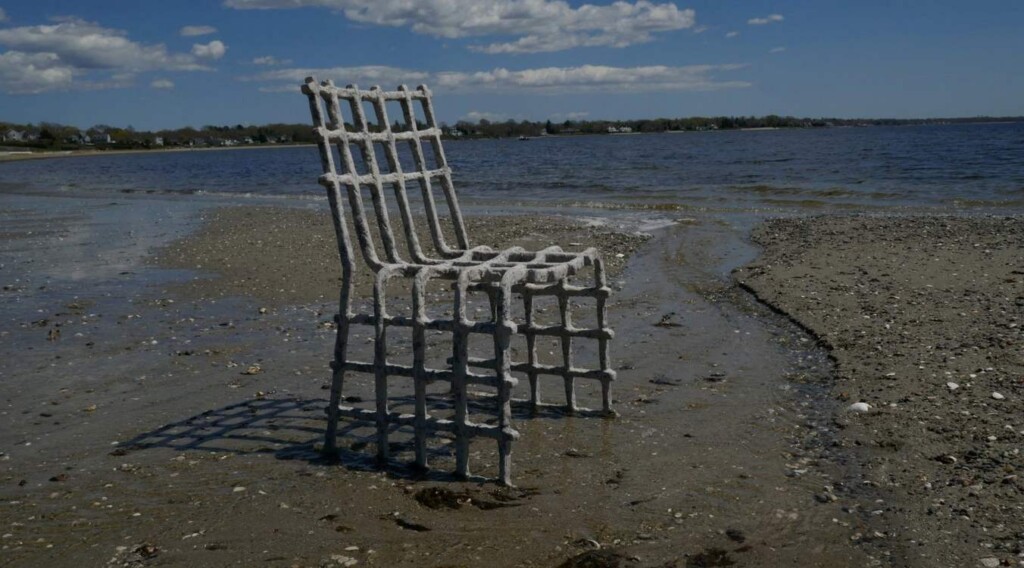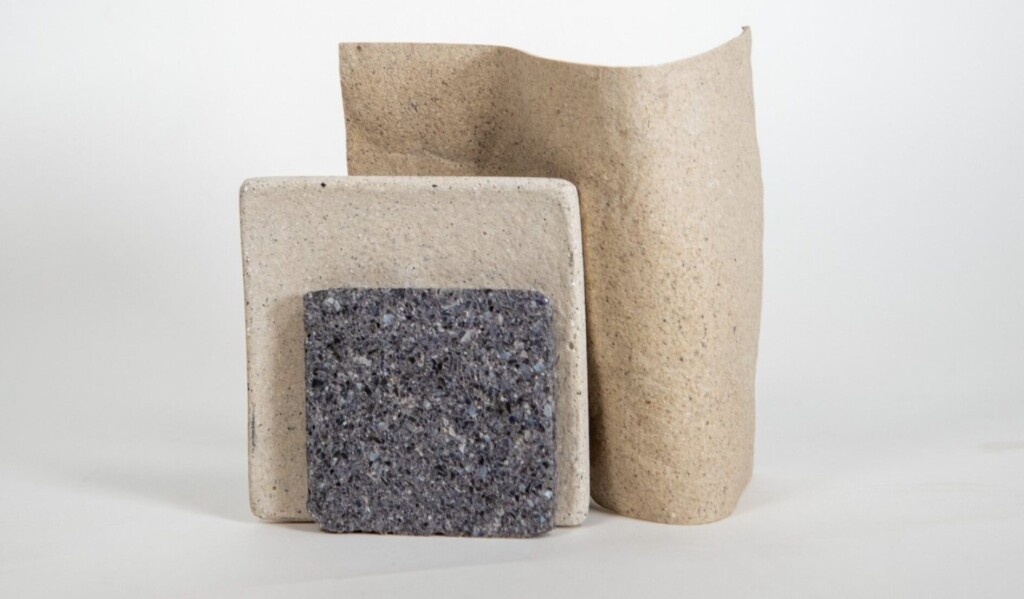 – credit Shellf life
– credit Shellf lifeFrom Rhode Island comes the story of a woman entrepreneur looking to turn shellfish into chic designer tiling and furniture that’s totally sustainable.
The Mid-Atlantic coastline produces millions of pounds of shellfish waste every year. Beloved for mussels, clams, scallops, crab, oysters, and more, this famous American cuisine is unfortunately wasteful.
Rather than letting it all go to the landfill, and rather than continue working for big design firms in Boston and New York City that crank out huge amounts of plastic waste, Felicia Neuhof founded Shellf Life to turn these shells into a resource.
Profiled in the Boston Globe, the Vermont native developed the processing method—that sees discarded shells turned into beautiful bespoke design elements and furniture—in her kitchen.
She eventually won a major design competition—the Terra Carta Design Lab Contest, overseen by King Charles III, which helped fund her R&D that has expanded the production method from a stovetop operation to a micro-lab in Providence.
Among the more striking aspects of the Shellf Life model are the numbers. Each of the Mid-Atlantic states, despite many being quite small, boast hugely productive shellfish industries.
One single Rhode Island processor, Neuhof told the Globe, produces enough shellfish waste annually to create 30,000 square feet of tiling, or around 330,000 tiles. One in Massachusetts could produce 5,000 bathroom floors worth of tile every year and one in New Hampshire could pitch in with enough for 1,000 shower surrounds.
“New England’s annual shell waste — currently headed to landfills — could tile nearly 300 homes every year,” she said.
What’s more, the tiles are simply gorgeous. Providence mussels create a texture similar to granite, while its clams look more like unrefined sea salt. Further afield, and demonstrating the reproducibility of Neuhof’s idea, Kyoto abalone shimmers in dozens of colored flakes anchored in a sand-colored medium, and limpets from the Azores glitter in mother-of-pearl.
 – credit, Shellf Life
– credit, Shellf LifeAnother key aspect anchoring her operations are her partnerships with local restaurants and aquaculturalists. At the City Island Oyster Reef, she’s working to help create concrete for use in the shellfish farms and sea walls from the very creatures they farm.
WASTE NOT WANT NOT: Group Celebrates 20 Years of Steering Surplus Office Furniture Away from Landfill and into Communities
Among the city’s restaurants, she’s made shell collection as easy as possible. Shellf Life-branded bins are given to partnering locations, and Neuhof comes to collect them herself. She hopes to introduce these bins at city collection points so those enjoying a clam bake in their backyard can chip in.
“My goal has been to develop a system so refined that making a tile is as easy as flipping burgers, opening up manufacturing opportunities to anyone regardless of educational background,” she said.
MORE CIRCULAR ECONOMIES: China’s Dying EV Batteries and Solar Cells Are Powering a Circular Economy Worth $38 Billion per Year
GNN has reported on restaurant waste being used to make design elements before. In Milan, coffee grounds and orange peels—thousands of pounds of which are used every day during the city’s breakfast rush, are collected by Krill which has a patent on a 3D-printing gel which they call ReKrill, and which corporations like San Pellegrino and Four Seasons are already using their products.
In Taiwan, “sea wool” is a unique textile created with an additive derived from the pulverized shells of bivalves like mussels.
SHARE This Innovative Idea With Your Friends On Social Media…
Source link

